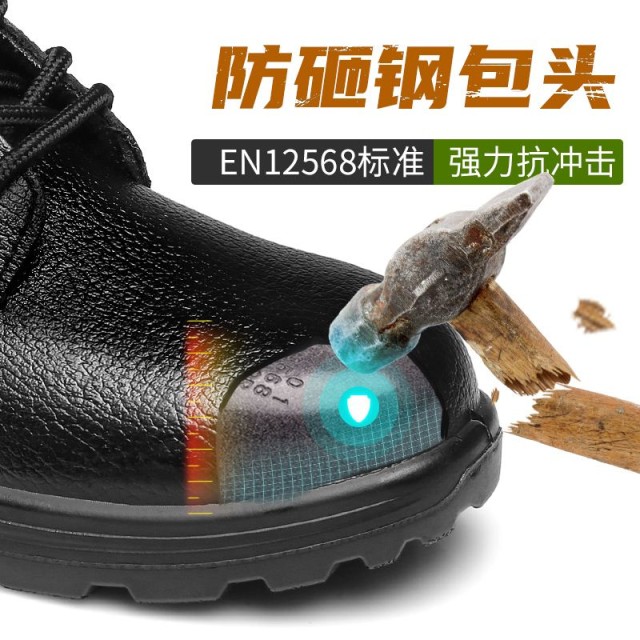Workplace safety footwear has evolved beyond bulky steel toes. Composite safety toes now offer superior protection with unexpected benefits—especially in extreme temperatures, electrical hazard zones, and high-fatigue environments. Here's why industries are switching.
Composite vs. Steel Safety Toes: A Safety Revolution
Steel toes dominated safety footwear for decades, but composite materials (often blends of Kevlar, fiberglass, or carbon fiber) now deliver comparable protection with critical advantages:
- 30% lighter weight reduces leg fatigue during long shifts
- Non-conductive materials prevent electrical accidents
- Temperature-neutral performance in freezers or foundries
- Metal-free construction simplifies security checkpoint passage
Research confirms composite toes meet ASTM F2413 and EN ISO 20345 safety standards for impact resistance—dispelling myths about compromised protection.
Weight Advantage and Workplace Fatigue Reduction
The Hidden Cost of Heavy Footwear
Steel toe boots add roughly 1.5–2 lbs per pair compared to composites. Over a 10-hour shift, this forces workers to lift an extra 20–30 tons of cumulative weight with each step.
Composite alternatives address this through:
- Reduced muscle strain: Lighter shoes decrease calf and lower back fatigue by up to 40% in field studies
- Improved mobility: Electricians and roofers report better balance on ladders
- Longer wear comfort: Warehouse workers experience fewer blisters from reduced friction
"Our assembly line teams switched to composite toes last year. Productivity rose 12% from fewer fatigue-related breaks." — Manufacturing Safety Manager, 3515 Client Case Study
Temperature Resilience: From Freezers to Foundries
Why Metal Fails in Extremes
Steel conducts temperature rapidly:
| Environment | Steel Toe Risk | Composite Solution |
|---|---|---|
| -40°F Freezers | Toe cap becomes ice-cold, risking frostbite | Maintains neutral insulation |
| 150°F Foundries | Transfers heat to feet within minutes | Blocks thermal transfer |
| Oil Rig Floors | Condensation causes slippery interiors | Moisture-wicking materials |
Composite materials act as thermal barriers, making them ideal for:
- Cold storage logistics
- Welding and metal fabrication
- Desert construction projects
Hidden Benefits: Electrical Hazards and Compliance
The Shocking Truth About Steel
Electrical accidents cause over 2,000 workplace injuries annually. Composite toes reduce risk because:
- Zero conductivity: Unlike steel, composites won’t complete circuits
- ASTM F2413 electrical hazard (EH) rating: Meets 18,000-volt insulation tests
- Magnetic field safety: MRI technicians and aerospace workers avoid interference
Industries benefiting most:
- Telecom tower climbers
- Live wire electricians
- Industrial battery manufacturers
Case Studies: Industries Embracing Composite Technology
Where the Shift Is Happening
-
Aviation Ground Crews
- Problem: Steel toes triggered airport metal detectors
- Solution: 3515’s composite-toe boots reduced security delays by 90%
-
Arctic Mining Operations
- Problem: Frostbite incidents from cold-conducting steel
- Solution: Composite boots cut thermal injuries by 75%
-
Solar Farm Installers
- Problem: Electrical hazards from panel wiring
- Solution: Non-conductive toes prevented 3 near-misses monthly
Upgrade Your Safety Footwear Inventory
3515’s composite-toe boots combine regulatory compliance with worker comfort—helping distributors and brands meet growing demand for smarter protection. Contact our team to discuss bulk order solutions tailored to extreme environments.
Key Takeaway: Composite safety toes aren’t just lighter—they solve steel’s weaknesses in temperature extremes, electrical hazards, and fatigue-prone workplaces while meeting all major safety certifications.
Related Products
- Wholesale Customizable Suede Safety Boots - Puncture-Proof with Velcro Closure
- Puncture-Resistant Velcro Safety Boots for Wholesale & Custom Manufacturing
- Wholesale Durable Safety Boots Manufacturer Customizable Steel Toe Work Boots
- Durable Steel Toe Safety Boots Wholesale & Custom Manufacturing
- Wholesale Slip-On Safety Boots Manufacturer - Custom Puncture-Proof & Steel Toe
Related Articles
- How to Choose Work Boots That Match Your Industry's Safety Needs
- Work Boots vs. Western Boots: How to Choose the Right Footwear for Labor Safety
- How to Choose Work Boots That Match Your Job Demands and Safety Needs
- How to Choose Work Boots That Match Your Job's Safety Demands
- How to Choose Work Boots That Balance Safety, Comfort, and Durability for Your Job



















